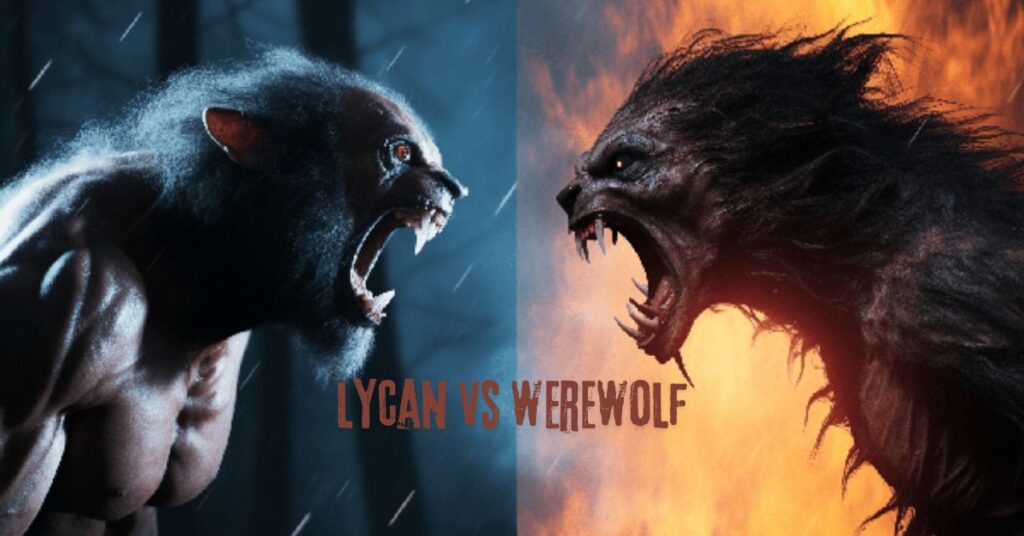Introduction to Lycans and Werewolves
When the moon rises high and shadows loom large, two enigmatic creatures often emerge from the depths of folklore: Lycans and Werewolves. Both have clawed their way into our imaginations, but many remain confused about what sets them apart. Are they simply different names for the same beast? Or do they represent distinct entities with unique traits and histories?In this exploration of lycan vs werewolf, we’ll dive deep into their origins, physical distinctions, skills, weaknesses, cultural significance, and how they’ve been portrayed in popular culture. Whether you’re a horror enthusiast or just curious about these mythological figures that have haunted humanity for centuries, join us on this journey to uncover everything you need to know!
Origin and Mythology of Lycans and Werewolves
The origins of lycans and werewolves are rooted deeply in ancient folklore. Many cultures have their variations, often depicting these creatures as cursed beings or shapeshifters.
In Greek mythology, the story of King Lycaon stands out. He was transformed into a wolf by Zeus as punishment for his arrogance. This tale illustrates the blend of human and beast that defines lycanthropy.
European legends also contribute to this rich tapestry. In medieval times, tales circulated about men who could transform into wolves during full moons. These stories instilled fear and fascination alike.
Some believe the term “werewolf” comes from Old English “wer,” meaning man, and “wulf,” meaning wolf. Meanwhile, “lycan” is more modern but closely associated with a more controlled transformation.
Cultural interpretations vary widely across regions, yet they all share an essence: the struggle between humanity and primal instincts.
Physical Differences between Lycans and Werewolves
Lycans and werewolves, while often mistaken for one another, possess distinct physical traits that set them apart.
Lycans typically resemble humans but with enhanced features. They may have elongated canines, sharp claws, and heightened senses. Their transformation is more subtle than a full shift into a beastly form.
Werewolves, on the other hand, exhibit drastic changes during their transformations. They become larger and bulkier than average wolves. Their fur is thick and coarse, covering their entire bodies like an animal’s hide.
Another notable difference lies in posture. Lycans tend to retain a bipedal stance even when transformed, giving them greater agility and control compared to the more bestial gait of werewolves.
These differences highlight not just their appearance but also their roles within folklore and mythology—each creature embodying unique aspects of humanity versus primal nature.
ALSO READ: Aubrey Horne Obituary Dunn NC: A Life Remembered
Abilities and Weaknesses of Lycans and Werewolves
Lycans and werewolves each possess unique abilities that set them apart in the realm of supernatural beings.
Lycans are often depicted as more human-like than their werewolf counterparts. They can shift at will, maintaining a level of control over their transformations. This autonomy allows them to blend into society when needed.
Werewolves, on the other hand, typically transform involuntarily during a full moon. Their strength is formidable, making them fierce predators with heightened senses and agility.
However, both creatures have vulnerabilities. Silver is often cited as the bane of both lycans and werewolves, causing severe harm upon contact. Additionally, emotional turmoil can affect their transformations; anger or fear might trigger an unwanted change.
Understanding these nuances helps clarify why debates about lycan vs werewolf continue to spark interest among fans of folklore and fantasy alike.
Cultural Significance of Lycans and Werewolves
Lycans and werewolves hold a prominent place in various cultures around the globe. These creatures often embody humanity’s fears and fascination with transformation.
In many myths, they symbolize the duality of human nature—the struggle between civilization and primal instincts. This conflict resonates deeply within societies, making them relatable figures in folklore.
Different cultures interpret their significance uniquely. For example, in European traditions, werewolves represent punishment for sins or transgressions. Meanwhile, Native American legends sometimes depict shapeshifters as protectors of nature.
Artistic expressions—literature, film, and visual arts—often leverage these themes to explore deeper moral questions about identity and belonging. The lycan versus werewolf debate further enriches this cultural tapestry by inviting discussions on what it means to be human versus beast.
Thus, they remain enduring symbols that continue to captivate audiences worldwide through captivating narratives.
ALSO READ: E-Soko Saree Inspirations: History, Styles, and Reviews
Pop Culture Representations of Lycans and Werewolves
Lycans and werewolves have long captivated audiences in movies, TV shows, and literature. Their portrayals vary significantly across different mediums, each offering a unique twist on the classic myth.
In films like “Underworld,” Lycans are depicted as sophisticated creatures with complex hierarchies. This portrayal contrasts heavily with more traditional werewolf images found in classics like “The Wolf Man,” where transformation is often involuntary and tragic.
Television series such as “Teen Wolf” showcase young adults grappling with their identities while balancing supernatural challenges. Here, both Lycans and werewolves embody themes of friendship and loyalty amidst chaos.
Graphic novels also contribute to the narrative depth of these creatures. Titles like “American Werewolf” explore darker aspects of humanity within monstrous transformations.
Video games too play a role; titles such as “The Witcher” allow players to engage intimately with lycanthropic lore, emphasizing choices that affect outcomes. Each representation reveals deeper cultural fears and fascinations tied to our understanding of these enigmatic beings.
Conclusion: The Never-Ending Debate Between Lycan vs Werewolf
The debate between lycans and werewolves has spanned generations. Enthusiasts, scholars, and fans alike have passionately discussed their differences and similarities. At the heart of it all lies a fascinating intersection of myth, culture, and storytelling.
Lycans are often portrayed as more human-like in their transformations. They maintain greater control over their actions even when in beast form. This aspect makes them intriguing figures in many narratives. Their origin stories often depict them as descendants of ancient beings or guardians with a strong connection to nature.
Werewolves, on the other hand, evoke primal fears associated with uncontrollable transformation driven by the moon’s phases. These creatures reflect humanity’s darker instincts — those moments when we feel out of control or lose our grip on civility.
Cultural significance adds another layer to this ongoing discussion. Both entities serve as metaphors for various societal issues: identity struggles, duality within human nature, and the balance between civilization and savagery.
Pop culture has played a massive role in shaping how we view these two creatures today. Movies like “Underworld” present lycans as complex characters who defy traditional classifications while classic horror films emphasize the terrifying aspects of werewolf lore.
Whether one leans toward believing in the sophistication of lycans or prefers the raw intensity embodied by werewolves may depend on personal tastes or cultural influences. The dialogue around “lycan vs werewolf” encourages exploration into what they symbolize about humanity itself—our fears, desires, and unending quest for understanding an often chaotic world.
ALSO READ: leonardo dicaprio gay? Exploring the Actor’s Personal Life
FAQs
Q: Are lycans and werewolves the same thing?
While both creatures are often depicted as half-human, half-wolf beings, they have distinct origins and characteristics in various mythologies and folklore.
Q: Can lycans and werewolves coexist peacefully?
It depends on the fictional universe or belief system. In some stories, they are mortal enemies. In others, they can learn to live alongside each other.
Q: Can a human become a lycan or werewolf?
In most depictions, a person must be born as a lycan or werewolf or be cursed/bitten by one in order to transform into a creature.
Q: Do all lycans and werewolves have superhuman strength?
While many depictions show them as powerful beings, the extent of their strength can vary depending on the lore or story being told.
Q: Are there any real-life cases of people transforming into lycans or werewolves?
No, there is no scientific evidence to support the existence of these creatures or the ability for humans to physically transform into them. They remain purely mythical beings in folklore and popular culture.







